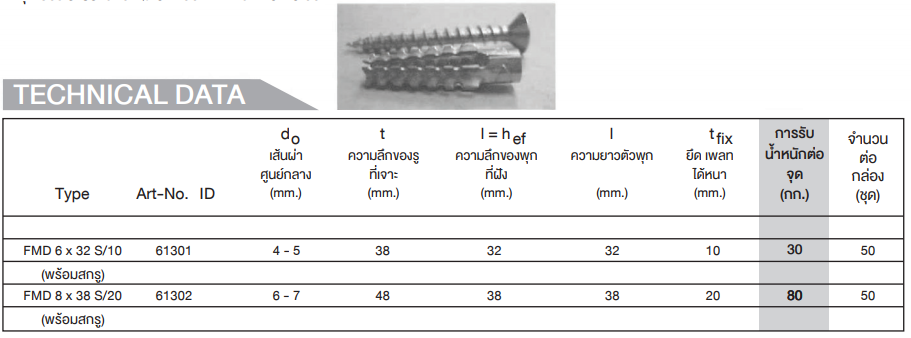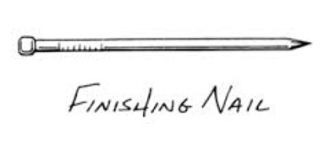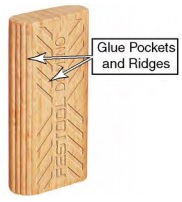
canopy
-
Posts
2,077 -
Joined
-
Last visited
Content Type
Events
Forums
Downloads
Quizzes
Gallery
Blogs
Posts posted by canopy
-
-
I had a UPS perhaps worse than that from Syndome. It constantly shrieked annoying loud beeps. I was so happy the day it went kaput and bought APC brand and have been happy ever since. In Thailand I have found power outages to be common. So I think it is good advice that before buying a UPS, listen to it.
-
22 hours ago, XGM said:
Hmmm, probably from the same place the "protected air conditioned transport air" in Bangkok comes from?
There is substantially improved air quality in an air conditioned vehicle. Anyone who has ever been in traffic in a tuk tuk in Bangkok will know this without needing to look it up.
-
On 11/4/2017 at 6:16 PM, XGM said:
Having moved from Bangkok to Chiang Mai a few months ago, I am interested in comparing the two. Right now I see 77 in CM and 132 in Bkk, I guess this is the situation most of the year,
First of all, it's a pretty sad, yet common state of affairs to compare the air in the countryside to the very biggest city. I don't think Bangkok air should ever be a benchmark for air quality in the north. Country air should be pristine, not polluted and people should accept no less. Today it says CM=109 BKK=91 so it is flip flopping already. And we haven't even scratched the surface of the smokey season yet. Keep in mind people living in Bangkok are typically shielded from the outside air. They live in air conditioned homes, go to air conditioned restaurants, use air conditioned transport, go to air conditioned shopping centers, schools, hospitals, and so on. The air outside is not much of a bother and this makes a big difference. In the north it's different. Much more likely for the population to be in open air 24 hours a day exposed to the full pollution all the time.
-
 1
1
-
-
the change was very fast which makes me think that local people didn't rush out and go on a burning spree.
This is precisely what triggers the fires. All it takes is about 2 dry days in a row and they rush out and start burning things. And the dryer it gets more and more burning goes on. I live on a mountain so it is easier to make this connection by looking at all the smoke tendrils. Almost none after recent rains. A few dry days in a row and bam! Burning horizon to horizon. The land burning you are talking about will primarily happen next year after it's become super dry. That's when the air quality sinks to its worst. For now one of the major things burning is stalks from harvests and other things stacked up waiting for dry weather. Just look around now the air is filth and the locals are contributing to this; don't need to look at a web site to make this assessment.
-
Air has already become filthy and we are only in October. The AQI has shot over 100 on the scale in a lot of places meaning it is over twice as bad as air considered to be of good quality and will keep climbing. Visibility is becoming very limited due to the pollution. I can't remember it getting this bad this fast before. This could be a very bad year.
-
So the "new trick" seems not so new at all--the poor sell land to the rich. And the new solution is to give back the land to these sellers. All the while they say it is the poor that are doing the encroachment. It's as if they want the poor to take as much forest land as they please as long as the rich are kept out of it. It's not clear how this policy is going to improve anything. The words "poor" or "rich" should not be part of any policy to protect the forest. Just protect the forest equally without discrimination. Then the strategy moving forward will become clear.
-
One thing everyone should be able to notice is the air quality has visually diminished in this last week of October as the rains fade away. If you look up the sky is blue. If you look out toward the horizons it is now a smoggy discoloration all around. Visibility is less than before through this haze. I was taught that if you can see the air you are breathing then you have problems. This is the beginning. It's going to get a whole lot worse.
-
Quick recap: unhealthy air blankets northern Thailand for around half the year. It is caused by people burning everything they can when the weather is dry which is roughly the October-April time frame. Some days/months are worse than others. Visibility can become extremely limited due to smoke. People go to hospitals for respiratory problems in large numbers. On the worst days the government hands out gas masks and tells people to stay inside with doors and windows closed and not to exercise. It is definitely something that changes a lot of expats minds about living there. I don't know of anywhere in northern Thailand that is immune; doctors say it is a health issue that impacts 100% of the population there.
This year's burning season may be ramping up now. A few days have gone by without rain and the fire bugs are all out eagerly burning. Visibility is worsening and the air quality level is starting to dip into unhealthy levels. There could be little to no good air until april of next year. Looking at how little has been done and how little the population cares about this self inflicted issue, it is presumed to remain indefinitely into the future with the people just continuing to burn and ignore it.
To give some indication of how seriously people see this issue, there are over 60 pages discussing this issue in this topic alone: Smoke, Smog, Dust 2016-2017 Chiang Mai.
-
Good find wayne. They actually say tungsten carbide--not sure if that is something even more special / available in Thailand. Also they say they have a screw that will drive and counter sink. Nothing anyone has shown me in the hardware stores here can do this however.
-
Viva board may be a great material in its finished form, but it is certainly the most difficult material I have ever worked with and I would only use it as a last resort. I have use the 20mm thick panels which makes it so tough going. It's good to clamp a board to run the saw against to keep the blade from wandering. Even then it requires tremendous will to keep the blade flush to the board. The amount of dust that billows out when cutting is beyond belief and requires wearing a respirator. Not only is it difficult to cut, a single panel weighs close to 200 pounds requiring teamwork to move and position. Driving screws is hopeless even with an impact driver. Pilot holes using specialty drill bits is necessary and I have found no ideal way of counter sinking.
But I doubt any of this is why no one will cut it. Just find any builder in your area and I am sure he will do it in a jiffy. Just need a circular saw with diamond blade.
-
The first step in solving any problem is awareness.
-
16 hours ago, Gandtee said:
Two mushroom pickers got a few years behind bars for doing just that.
Don't be so gullible. You are believing the sensationalized headlines. They were busted for illegal logging. They unsuccessfully tried to say they were mushroom picking to get off. Every single court found them guilty of being complicit in illegal logging. The evidence was overwhelming. I'd say it's time to consider that just maybe they were guilty as charged and their mushroom story was just a smokescreen that you and others ate up.
-
It's probably a good one to search in google for good understandings and solutions suited to your particular case.
-
The shaded column is the load bearing capacity. There is no 50 there. The far right column is the quantity per box (50). That's why I was suspicious when you said 50 kg. Strange that in the ENGLISH handbook they have this table all in Thai, oops.

-
Usually leach fields from septic tanks need grass planted over them to work properly where the roots draw the nitrogen out.
-
says (through my translation) 50 kg.
I wonder if there was a translation error? The tables I have seen say they come in a 50 pack, not 50KG load capacity.
The specs are particular on the pilot hole diameter to use as well as the exact depth to drill. Masonry bits work, but for quicker, cleaner holes composite bits sold at hardware stores that are made for cement board and things are a little better. Also remember to select the recommended screw size. I would guess almost no one follows the book on these yet they usually still work and in the rare case they fail people blame the block as being weak rather than the fixing job.
-
May be of interest they have electric pin nailers at the big hardware stores. They cost much more than compressed air types, but you don't need a compressor. Then there are battery powered nailers which cost not much more than electric ones. I have done some reading about the different types of small nails available today. I did not see any suggestions to just put in a lot of pin nails to achieve adequate strength. Typically pin nails or even brads are used only to hold work pieces together long enough until the actual fasteners / glues can be installed. The tiny hole left from pin hole nails is a definitely a plus, but for me robustness of the finished product is more important.
-
Answer: amazon has a great selection of finishing nails including stainless steel, coated, different gauges, lengths and shipping to Thailand.
Rant: Definitely do not want a compressor and/or a pin nailer which are all the rage now--pin nails are too weak and are not a substitute for finishing nails in most cases. Would consider an expensive battery pack powered brad nailer like Makita because no compressor is needed and brads offer at least some holding power. But I really want some cheap, traditional, strong, easy to use finishing nails. I am astonished to learn such a cheap and easy technology is apparently not used in Thailand. I guess they just don't mind big, ugly, rusty nail heads showing all over the place.
-
Anyone had luck finding finishing nails online or in stores?

-
Mortise and tenon is the best though also the most difficult to execute. Dominoes are also strong and their appeal is speed. Dowels and biscuits are obsolete technologies. I have a domino joiner. While tempting, I would not make my own dominoes. First unlike the tool, dominoes are cheap. But that's not why. More importantly dominoes are extremely well engineered in subtle ways that might not be fully understood or easy to replicate. For instance they are optimized for holding power after gluing:

-
I work with teak on a daily basis for years. It takes about 10-15 years for a teak tree to develop termite-resistant oil. And while the heartwood becomes termite resistant, the sapwood never does. A newly felled teak tree of any age often has powder post beetles burrowing in the juicy, damp sapwood. The sapwood also easily molds where the heartwood does not. Very wet teak will be eaten regardless of age. If one wants it to last, teak should never be in ground contact or exposed to standing water.
-
What authorities are you referring to and what did they do? And why not just continue getting their help?
-
It's interesting greywater systems are still evolving. Getting the kinks out is progressing for instance with ease of maintenance. And making a system that takes full advantage of the Thai climate to me is essential. I have found these resources particularly useful:
-
Global House has bigger size terracotta.




how to connect 4" pvc pipe
in DIY Forum
Posted
Unlike smaller sizes, I have found the amount of force needed to fully insert 4" pvc pipe to be tremendous beyond belief. Anyone found a good way to get this size together, especially in cases where little leverage is available?